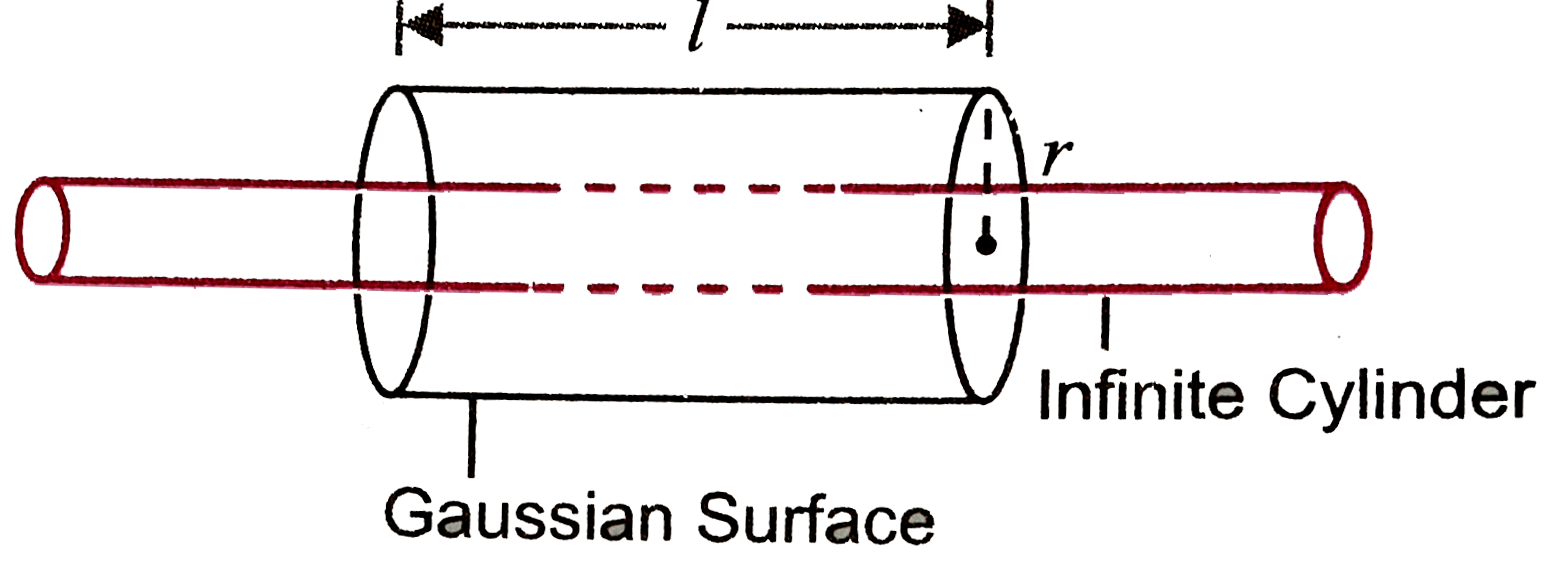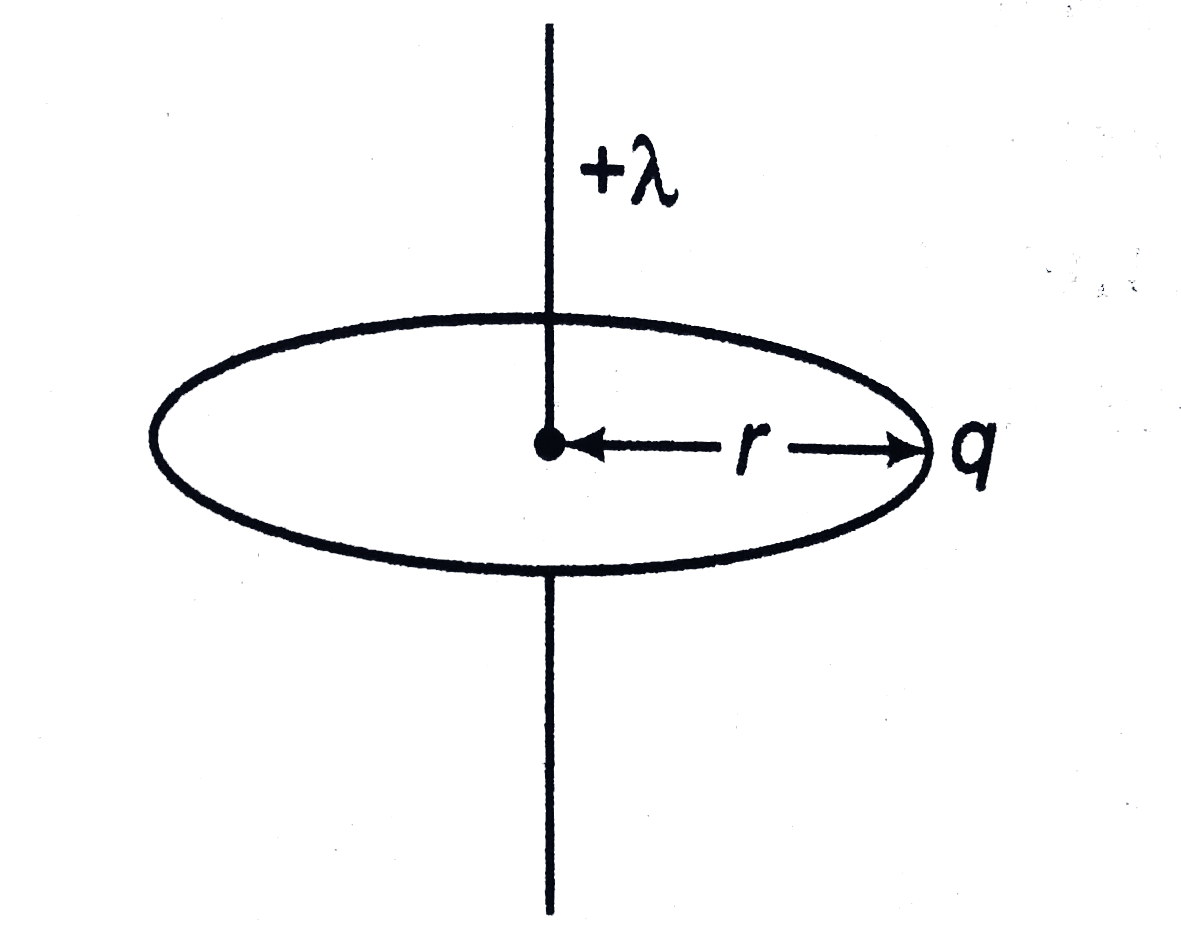Find the equatio of the equipotentials for an infinite cylinder of radius r0 carrying charge of linear density λ.
Fig shows an infinite cyclinder of radius r0 carrying charge of linear density λ, From symetry, we find that the field lines must be radially outwards. Imagine a cylindrical Gaussian surface of radius r and length l. According to Gauss's theroem,
∮→E,→ds=q∈0=λl∈0
E(2πrl)=λl∈0orE=λ2π∈0r ..(i)
∴V(r)−V(r0)=∫rr0→E.→dl=λ2π∈0loge(r0)r
For an equipotential surface of given V(r),
loge(r)r0=2π∈0λ[V(r)−V(r0)]∴r=r0e−2π∈0[V(r)−V(r0)]/λ ...(ii)
Hence, equipotential surfaces are cylinders of radius r given by (ii).

Topper's Solved these Questions
- BOOK - PRADEEPCHAPTER - ELECTROSTATICSEXERCISE - VALUE BASED QUESTIONS7videos
ELECTROSTATICS
- BOOK - PRADEEPCHAPTER - ELECTROSTATICSEXERCISE - Exercise414videos
ELECTROSTATICS
- BOOK - PRADEEPCHAPTER - ELECTROSTATICSEXERCISE - ADDITIONAL QUESTIONS2videos
ELECTROSTATICS
- BOOK - PRADEEPCHAPTER - ELECTRONIC DEVICESEXERCISE - Fill in the Blanks1videos
ELECTRONIC DEVICES
- BOOK - PRADEEPCHAPTER - MAGNETIC EFFECT OF CURRENT AND MAGNETISMEXERCISE - Competition Focus (Multiple Choice Questions)2videos
MAGNETIC EFFECT OF CURRENT AND MAGNETISM
Similar Questions
Find the equatio of the equipotentials for an infinite cylinder of radius r0 carrying charge of linear density λ.
View SolutionFind the magntiude and diraction of the magnitude induction vector B
(a) of an infinite palne carrying a current of linear density I, the vector i is the same at all points of the plane,
(b) of two parallel infinite planes carrying currents of linear densities a dn -1, the vectors i and −i are cohnstant at all points of the corresponding planes.View Solution
Knowledge Check
- Question 1 - Select One
A particle of charge −q and mass m moves in a circle of radius r around an infinitely long line charge of linear charge density +λ. Then, time period will be
 where , k=14πε0)AT=2πr√(m2kλqBT2=4π2m2kλqr3CT=12πr√2kλwmDT=12πr√m2kλq
where , k=14πε0)AT=2πr√(m2kλqBT2=4π2m2kλqr3CT=12πr√2kλwmDT=12πr√m2kλq - Question 2 - Select One
Find ratio of electric at point A and B. Infinitely long uniformly charged wire with linear charge density λ is kept along z-axis:
 A1:2B1:6C6:1D1:1
A1:2B1:6C6:1D1:1
Find the electric field at the centre of a uniformly charged semicircular ring of radius R. Linear charge density is λ
View SolutionFind the electric field due to an infinitely long cylindrical charge distribution of radius R and having linear charge density λ at a distance half of the radius from its axis.
View SolutionState Gauss's law in electrostatics. Use this law to derive an expression for the electric field due to an infinitely long straight wire of linear charge density λcm−1
View SolutionDraw the electric field vs distance (from the centre ) graph for (i) a long charged rod having linear charge density λ>0 (ii) spherical shell of radius R and charge Q>0 .
View SolutionFind the electric field intensity at a point P which is at a distance R (point lying on the perpendicular drawn to the wire at one of its end) from a semi-infinite uniformly charged wire. (Linear charge density = λ).
View SolutionWrite the expression of electric field due to an infinitely long, straight, wire having linear charge density λ at a point that is at a distance r from it.
View Solution

